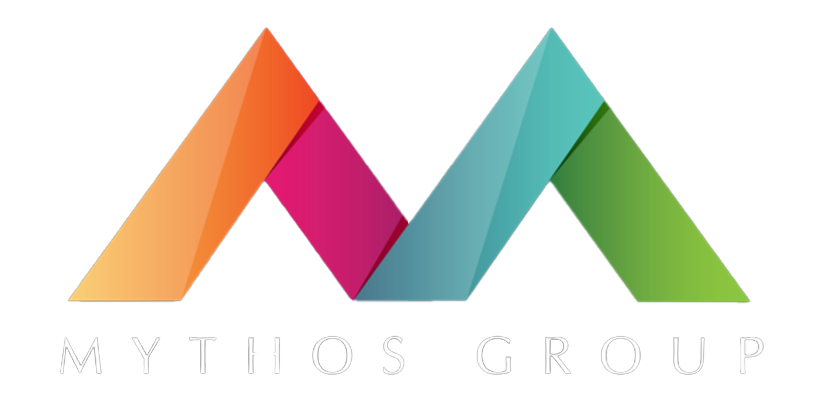I’ve spent twenty years advising Fortune 500 companies through every kind of transformation you can imagine. Digital. Cloud. Agile. What’s happening right now with AI and jobs is different, and we need to talk about it without the usual corporate BS.
In July 2025 alone, over 10,000 jobs disappeared specifically because companies decided AI could do the work instead. Since 2023, we’re looking at more than 27,000 tech jobs gone because of AI-driven redundancy. These aren’t projections or trend lines. These are real people cleaning out their desks while their CEOs talk about “operational efficiency” on earnings calls. I don’t think most executives actually know if they’re making the right call.
The Scale Of What’s Happening
Accenture’s workforce dropped from 791,000 to 779,000 employees between May and August. That’s 12,000 people gone while saving the company over a billion dollars. They’re simultaneously training 70,000 remaining employees in AI, which tells you everything about their bet: retrain fast or you’re out. Microsoft cut 15,000 roles this year. Intel is shedding 25,000 jobs, a full 15% of their entire workforce. TCS is dropping 12,000, specifically targeting middle and senior management.
These aren’t startups making desperate plays for survival. These are titans of industry making calculated decisions based on spreadsheets that show AI can do the work cheaper. Salesforce eliminated 4,000 customer support roles, claiming AI can handle 50% of the work. Fiverr cut 30% of their workforce as the CEO declared the company “AI-first.” Just Eat dropped 450 positions, explicitly citing automation as the reason.
The pattern is consistent across industries, across company sizes, across geographies. What varies wildly is whether these companies actually know what they’re doing.
The Klarna Case Study
Klarna’s story should be required reading in every boardroom right now. Between December 2022 and December 2024, they cut 40% of their workforce. From 5,527 people down to 3,422. The CEO proudly announced that AI was doing the work of 700 customer service agents. Wall Street loved it. The stock popped.
Then something inconvenient happened. They started hiring again. Turns out customers actually want to talk to humans when their payment gets declined at checkout or their refund goes missing. Quality issues piled up. The AI was excellent at answering simple questions but fell apart when things got complicated or required empathy.
This is what nobody discusses when we’re all excited about AI ROI projections in the boardroom. Sometimes the math works on paper but fails in reality. You only discover this after you’ve already laid off hundreds of people who knew your business inside and out. The institutional knowledge, the judgment calls, the ability to handle exceptions. You don’t see the value until it’s gone.
Who’s Actually Being Replaced
The data tells an uncomfortable story about who’s bearing the brunt of this transformation. According to MIT’s latest research, AI is predominantly replacing outsourced and offshore workers, not U.S. employees. Companies are canceling BPO contracts with firms in Manila and Bangalore, pocketing $2 million to $10 million in savings. It’s the ultimate out-of-sight, out-of-mind layoff.
Cancel a contract, replace it with AI, and most home-country employees never see the human cost.
The second group getting hammered is entry-level workers. If you just graduated college and you’re trying to break into tech or professional services, you’re walking into a buzzsaw. AI is genuinely capable at junior-level work. Data entry, basic analysis, first-draft writing, simple coding tasks.
Companies look at entry-level salaries and see easy targets. Why hire three junior analysts when AI can do 80% of the work and one senior person can QA it?
I think about all those kids graduating this spring who did everything right. Good grades. Learned to code. Built their LinkedIn profiles. Now they’re applying to 200 jobs and getting ghosted because companies have decided they don’t need as many entry-level people anymore. The entry ramp into professional work is disappearing beneath their feet.
The Excuse Economy
Let me be blunt. A lot of companies are using AI as cover for layoffs they wanted to do anyway. Yale’s Budget Lab looked at actual labor disruption since ChatGPT launched in 2022 and found that U.S. employment has barely been affected by AI automation. Yet somehow we’re seeing tens of thousands of layoffs explicitly attributed to AI. Something doesn’t add up.to know how this works.
The company overhired during the pandemic. They got overexcited about growth projections. They made bets that didn’t pan out. Now they need to cut costs, but “we made bad decisions” doesn’t play well with investors. “We’re strategically deploying AI to drive efficiency”? That gets you a stock bump.
How many of these companies would have done layoffs anyway and just found a more palatable story? I’d bet it’s more than half. AI has become the most convenient scapegoat in corporate America.
The Certainty Problem
AI is real. The capabilities are real. The productivity gains are real. I’m not suggesting we resist technological progress. In many cases, AI genuinely is better at certain tasks than humans are.
That’s reality.
What bothers me is the certainty with which companies are making these decisions. When you lay off thousands of people because you think AI can replace them, you’re making a bet. You’re betting you understand the full scope of what those people did. You’re betting your AI will perform as advertised. You’re betting you can handle the exceptions, the edge cases, the angry customer who needs empathy, not an algorithm.
A lot of companies are losing those bets. Amazon’s CEO sent a memo saying they plan to reduce corporate headcount as they get efficiency gains from AI. That’s Jassy telling us they’re still figuring it out by trying. Lufthansa is planning to eliminate 4,000 jobs by 2030, six years from now. They don’t even know exactly how AI will reshape their business yet. They just know the headcount number they want to hit.
The Incoherence Of It All
If AI is so transformative, why are we seeing such wildly different approaches across companies? Google cut 25% of its smart TV team while pumping money into Bard and Gemini, then turned around and cut 200 AI contractors. Microsoft is cutting thousands while investing billions in OpenAI. These companies have access to the same technology, the same consultants, the same data.
Yet they’re making completely different calls about how many people they actually need.
To me, that suggests we’re still in the “nobody really knows” phase. Executives are making gut calls dressed up as data-driven decisions. They’re following what peer companies are doing. They’re reacting to activist investors who want efficiency gains. They’re trying to beat earnings expectations next quarter.
What they’re not doing, in many cases, is taking a clear-eyed look at what AI can actually do today versus what it might do tomorrow. They’re not making deliberate, human-centered decisions about workforce planning. They’re making spreadsheet decisions and hoping the future will justify them.
What Should Actually Happen
If I were advising a CEO right now (and I do, regularly), here’s what I’d say. Stop treating AI adoption like a cost-cutting exercise. Yes, it will affect your cost structure, but if that’s your primary lens, you’re going to make bad decisions. Klarna is proof.
Start with the work, not the headcount. Figure out what AI genuinely does better than humans,
what humans do better than AI, and what needs both. Then design your organization around that reality. It’s harder than cutting 15% across the board, but it’s the only approach that actually works long-term.
Invest seriously in the people you’re keeping. Accenture is training 70,000 people in AI while laying off 12,000. That ratio tells you something important. If you’re betting on AI, you need people who can work alongside it, manage it, QA it, and figure out when it’s producing garbage. That requires real investment in reskilling, not a two-day workshop. Most critically, be honest about what you don’t know. The executives I respect most these days are the ones who say, “We think AI will change how we work, and we’re going to experiment carefully rather than making wholesale bets.” That’s wisdom. The ones promising investors 40% efficiency gains are either lying or delusional.
The Human Element
Every one of these layoffs is someone’s mortgage payment, someone’s kids’ tuition, someone’s sense of identity and purpose. The human cost of getting this wrong is enormous. The corporate cost (as Klarna learned) is also damn high. When you gut expertise you actually needed, you don’t get it back easily.
We’re in the middle of a massive experiment in how AI reshapes work, and too many companies are treating it like we already know the answer. We don’t. We’re making educated guesses at best, wild speculation at worst.
What Comes Next
Some jobs will be automated. That’s inevitable. But this wave of layoffs we’re seeing? A lot of it is premature, poorly thought through, and using AI as justification for decisions that have more to do with quarterly earnings than actual technological capability.
If you’re a worker watching this unfold, I get why you’re anxious. The entry-level path that existed a decade ago is narrowing fast. The stability that came with corporate jobs is eroding. It’s real, and it’s scary.
But I also think we’re going to see significant course correction. Companies are going to realize they cut too deep. They’re going to see quality problems, customer complaints, and knowledge gaps they didn’t anticipate. Some will hire back. Some will figure out better hybrid models. Some will fail because they gutted the expertise they actually needed. This isn’t the end of human work, but it is a fundamental reset in how we think about the relationship between humans and machines in the workplace.
Right now, we’re stumbling through it, making costly mistakes, and learning as we go. Anyone who tells you they have it figured out is selling something.







